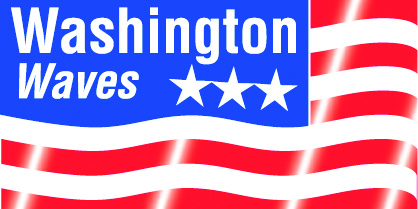Washington, D.C.—House Speaker Nancy Pelosi (D-Calif.) led a group of her key committee chairmen and freshman lawmakers to try and resuscitate infrastructure as a potential bipartisan issue by announcing a five-year, $760 billion “framework” that includes $10 billion to tackle the backlog at the U.S. Army Corps of Engineers and $19.7 billion to improve harbors, ports and channels.
“It’s an issue of commerce, moving commerce, moving product to market,” Pelosi said, adding “whether it’s about dredging the Mississippi or the Delta, whatever, or having more surface transportation.”
In its response the Waterways Council Inc. singled out the $3 million down payment to modernize the inland waterway system.
A crucial element on how to pay for the framework was left out.
Rep. Richard Neal (D-Mass.), chairman of the House Ways and Means Committee, made it clear he did not want his tax-writing panel to come up with a revenue stream until a bipartisan deal could be struck with President Trump, who earlier in his term pushed infrastructure, even at one point suggesting a $2 trillion, 10-year package before that effort imploded over partisan squabbling.
“I think that what we’re looking for here is an agreement that we can then take to the public, between the two sides, on how best to pay for it, so there’s not one-upmanship,” said Neal, who spoke of his conversations with Treasury Secretary Steven Mnuchin that included talk of taking up infrastructure after the USMCA was done (see below).
Even while mostly avoiding providing details on funding such a package, he did mention Build America Bonds as a “really good place to start for all of us.”
Rep. Peter DeFazio (D-Ore.), chairman of the House Transportation and Infrastructure Committee, mentioned a combination of user fees and bonds.
Several hours later, Neal’s committee held a hearing entitled “Paving the Way for Funding and Financing Infrastructure Investments.”
Rep. Kevin Brady (R-Texas), the panel’s ranking member, used his opening statement to suggest that user fees should remain a key source of funding but stated that calls for tax increases would jeopardize the entire effort.
In addition to the traditional elements of infrastructure such as highways and rail, DeFazio explained the package also would address increasing resiliency to climate change and environmental justice, issues that will not make it easier to reach a bipartisan deal, especially in an election year whose schedule already is truncated by an impeachment trial and party conventions later this year.
Rep. Sam Graves (R-Mo.), the ranking member of DeFazio’s committee, said he looks forward to a bipartisan process and his own “constructive role” in developing an infrastructure package but then added his own advice to Democrats.
“The time for partisan posturing from House Democrats is over,” Graves said.
He also had posted a press release on a report from Washington state that recommends moving away from fuel taxes to a Vehicle Miles Traveled (VMT) system as a funding source.
Trump Signs USMCA
President Donald Trump signed H.R. 5430 implementing the United States trade agreement with Mexico and Canada (USMCA), describing the White House ceremony as a “momentous, historic and joyous occasion.”
“The USMCA is the largest, fairest, most balanced, and modern trade agreement ever achieved,” said Trump, who had promised to replace the decades-old North American Free Trade Agreement.
“This is a colossal victory for our farmers, ranchers, energy workers, factory workers, and American workers in all 50 states.”
According to a White House fact sheet, USMCA could create nearly 600,000 jobs and generate up to $235 billion in economic activity.
Two specific examples: $2.2 billion in higher U.S. agricultural exports and $34 billion in new investments in the auto industry.
Canada remains the only one of the three countries not to act on the trade agreement, and Prime Minister Justin Trudeau has made such action one of his top priorities.
Intermodal Sealift Meeting
A classified, invitation-only meeting of the Voluntary Intermodal Sealift Agreement/Joint Planning Advisory Group was held to brief members on strategic and operational developments, affirm the industry’s readiness, ability and resilience to meet Department of Defense (DOD) contingency transport requirements and discuss planning assumptions for potential deployment scenarios.
Co-hosted by the Maritime Administration and the United States Transportation Command, the meeting was held January 14 at Scott Air Force Base, Ill.
According to the notice published as required in the Federal Register, the “meeting was rated a success by industry participants, who offered informed and useful information on the provision of capacity and resources to meet DOD requirements.”
For additional information, contact William McDonald at 202-366-0688.
National Maritime Strategy
After a year-long delay, a new interagency group charged with finalizing a National Maritime Strategy now includes the Department of Defense (DOD) and other key agencies not
previously consulted and should address gaps in coordination, the U.S. Government Accountability Office (GAO) reported.
“DOT [Department of Transportation] officials told GAO that they intend to submit the strategy to Congress by February 2020, as required,” the GAO stated.
The National Maritime Strategy is an effort to address challenges faced by the maritime industry and the DOD such as continued declines in the size and capabilities of the U.S.-flag fleet and a potential shortage of mariners.
According to a timeline laid out by the GAO report, a National Maritime Strategy was first mandated by a 2014 law. In 2018, DOT submitted a revised draft to the Office of Management and Budget (OMB) for an interagency review, but OMB suspended that process at the request of the Executive Office of the President because of plans to convene a committee to consider policy matters related to the strategy. After DOT learned such a committee was no longer planned, it established the new interagency group.




